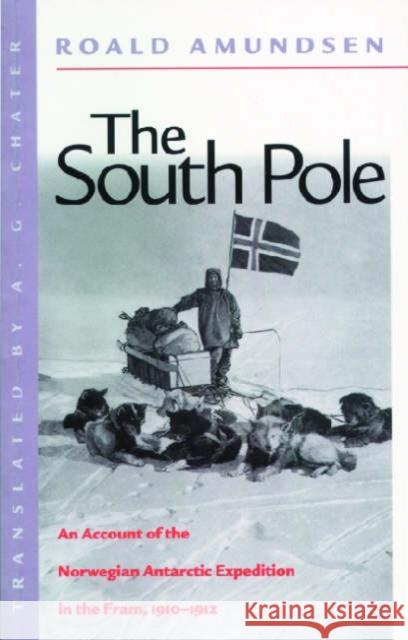The South Pole: An Account of the Norwegian Antarctic Expedition in the FRAM, 1910-1912 » książka
The South Pole: An Account of the Norwegian Antarctic Expedition in the FRAM, 1910-1912
ISBN-13: 9780814706985 / Angielski / Miękka / 2001 / 896 str.
The South Pole: An Account of the Norwegian Antarctic Expedition in the FRAM, 1910-1912
ISBN-13: 9780814706985 / Angielski / Miękka / 2001 / 896 str.
(netto: 188,29 VAT: 5%)
Najniższa cena z 30 dni: 166,74
ok. 16-18 dni roboczych
Bez gwarancji dostawy przed świętami
Darmowa dostawa!
Before Sir Ernest Shackleton's exploration of the Antarctic waters in 1914, Captain Roald Amundsen led a courageous team through ice-chocked waters to become the first expedition to reach the South Pole in 1911. Read the fascinating account of his journey in "The South Pole."
"Roald Amundsen planted the Norwegian flag on the South Pole on December 14, 1911: a full month before Robert Falcon Scott arrived on the same spot. Amundsen's 'The South Pole' is less well-known than his rival's, in part because he is less of a literary stylist, but also, perhaps, because he survived the journey. His book is a riveting first-hand account of a truly professional expedition; Amundsen's heroism is understated, but it is heroism nonetheless."
--"The Times of London," 23 June 2001
At the beginning of the twentieth century, the South Pole was the most coveted prize in the fiercely nationalistic modern age of exploration. In the spring of 1911 two separate expeditions left their respective camps in Antarctica in a desperate bid to achieve the glory of being first to reach the South Pole: a British party, led by Captain R. F. Scott, and a Norwegian one under Captain Roald Amundsen. The South Pole, Amundsen's first-hand account of the expedition, is a fascinating and highly readable history of the tenacity and perseverance of the age.
"The last of the Vikings," Roald Engebreth Gravning Amundsen was a powerfully built man of over six feet in height, born into a family of merchant sea captains in 1872. In 1903 he navigated the Northwest Passage in a 70-foot fishing boat. Soon afterwards he learned that Ernest Shackleton was setting out on an attempt to reach the South Pole. Shackleton abandoned his quest a mere 97 miles short of the Pole, but Amundsen began preparing his own expedition. Although this was the age of the amateur explorer, Amundsen was a professional: he left little to chance, apprenticed with Inuits, and obsessed over every detail.
On October 18, 1911 Amundsen's party set out from the Bay of Whales, on Antarctica's Ross Ice Shelf, for their final drive toward the pole. His British counterpart, Robert Falcon Scott, dependent on Siberian ponies rather than on dogs, began his trip three weeks later. While Scott clung fast to the British rule of "No skis, no dogs," Amundsen understood that both were vital to survival. Aided by exceptionally cooperative weather conditions, Amundsen's men passed the point where Shackleton was forced to turn back on December 7, and at approximately 3pm on December 14, 1911, Roald Amundsen raised the flag of Norway at the South Pole, one month before Scott's party would arrive.
A polar masterpiece of history and adventure, The South Pole is the stunning first-hand account of one of the greatest success stories in the annals of exploration. Most skillfully Amundsen constructs the expedition's character through its personalitiesthe cast of veteran explorers, scientists, and crewproviding insight not only into Amundsen's philosophy of exploration, but into the classical age of polar explorers."











